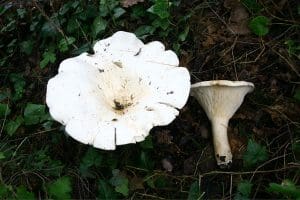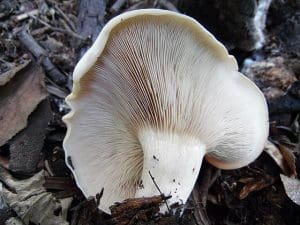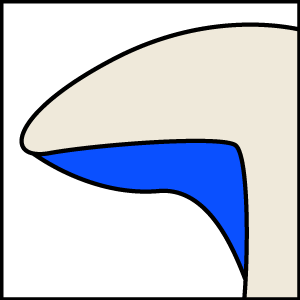Giant Funnel / Summer / Autumn / Edible
Welcome to a world of culinary marvels as we celebrate the delightful flavors of the Giant Funnel (Leucopaxillus giganteus).
Join us on a journey where gastronomy meets grandeur. With its imposing size and distinctive funnel shape, the Giant Funnel stands as a captivating edible treasure.
Learn to identify its distinguishing features, discover its preferred habitats, and delve into the culinary wonders it bestows. From its tender texture to its rich, earthy taste, this mushroom holds the power to elevate your culinary creations to awe-inspiring heights.
Whether you are an experienced forager or an enthusiastic home cook, let the Giant Funnel inspire your culinary adventures and tantalize your taste buds with its marvelous flavors. Embrace the abundance of nature’s bounty as we celebrate the enchanting delights that lie within the Giant Funnel. Get ready to embark on a flavor-filled journey as we explore the captivating culinary possibilities offered by this remarkable mushroom.
Scientific Name
Leucopaxillus giganteus
Common Names
Giant Funnel, Giant Clitocybe
Family
Physalacriaceae
Habitat
They are saprotrophic and appear on woodlands edges, hedgerows and fields.
Description
A substantial mushroom that can often be found in large troops or rings, they are edible for most but cause gastric upset in some.
Identifying Features of the Giant Funnel:
Cap:
As the common name suggests they are a large mushroom with caps up to 30cm across. Convex when young they become funnel shape with maturity. Young caps are off white getting more tan/beige with age.

Stem:
Quite short and stout. Initially white in colour the stem becomes buff with age, as they mature they develop reddish fibres that run down the length of the stem.
Gills:
The gills are white when young, darkening with age, fairly crowded, decurrent and forked.


Smell:
Mushroomy.
Spores:
White.
Uses
In food
They must be thoroughly cooked before consumption and even then they aren’t tolerated by everyone.
If it is your first time trying them you’re advised to thoroughly cook a small part and wait 24 hours to see whether there is any adverse reaction.
They are very substantial and one cap would feed a couple of people. The taste isn’t incredible but I like them finely sliced, fried and then added to risotto dishes.
Harvesting
The younger caps are best as they can get slightly bitter tasting with age.
They are often infected with maggots so not really vegan friendly.
Known hazards
Tasty for most but they can cause gastric issues in roughly 1 out of 5 people.
Potential lookalikes
Some members of the Clitocybe family can look similar but they would never reach the size of the Giant Funnel.
The Trooping Funnel (Infundibulicybe Geotropa) can look similar but this is more tan/orange in colour, has a much longer stem and has a central umbo.
Extra Notes
The Giant Funnel contains a bioactive compound called clitocine that has antibiotic properties, this compound has also been shown to have anti-cancer properties, causing cervical cancer cells to die.







Leave a Reply
You must be logged in to post a comment.